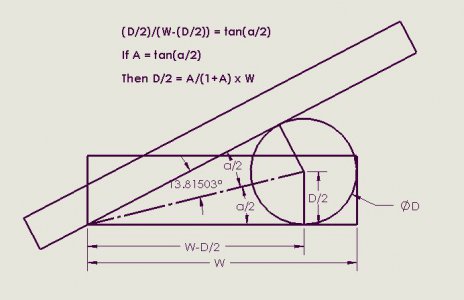- Joined
- Dec 8, 2013
- Messages
- 2,651
Hello all
Question on milling angles, I have never used space blocks before.
Most digital angle gauges are accurate to .100 of a degree, that would translate to .0017"
The smallest division change on the space blocks is .001.
So it looks like with the space blocks or the digital angle gauge I could easily maintain accuracy of 1/10 of a degree.
Wanted to get some feedback from the more experienced machinists what their feeling is on using one or the other?
Thanks
Joe

